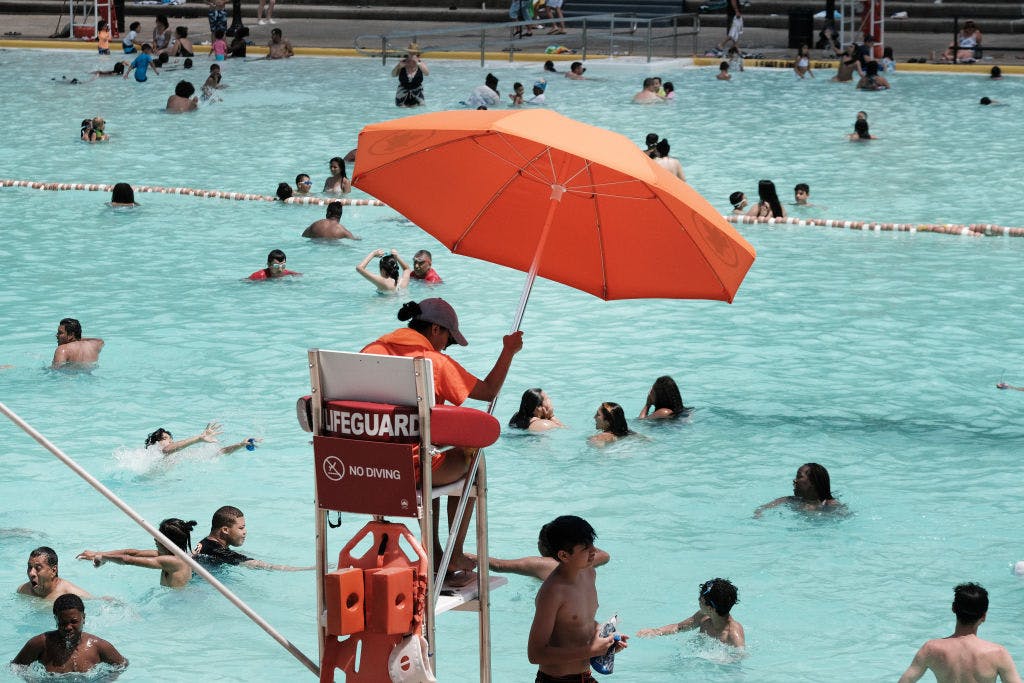Swim Skills Key to Safe Summer for Children — With Spillover Benefits
Advice from a non-alarmist mom dedicated to actual safety, not security theater or moral panics.

If you want to keep your children safe this summer, don’t focus on stranger danger. (Especially since the vast majority of crimes against children are committed by people they know.) Focus on water danger.
Teach your children to swim.
I say this as a non-alarmist mom dedicated to actual safety, not security theater or moral panics. The Texas Department of Family and Protective Services’ injury prevention and children’s health tsar, David Aguilar, put it this way on CBS News: Until your tots know how to swim, parents, you should always practice “active supervision” of them near water.
No one disagrees. The Centers for Disease Control and Prevention report that drowning is the No. 1 way tots aged 1-5 die. And even when those children are a little older, it remains way up there, right after dying as passengers in car accidents.
Most child drownings happen in swimming pools. And terrifyingly, they often happen when a child is not expected to be near water — for instance, when they somehow gain access to a pool without anyone realizing this.
But you should teach your children to swim whether or not you have a pool. Formal swimming lessons reduce a child’s chance of drowning by 88 percent, according to the CDC.
“Learning to swim is about staying alive when you end up in the water,” is how a certified safety professional in California, Brad Bargmeyer, summed it up to me. “I remember when my nephew at age 6 confidently strode out into a dock with no railings to get a closer look at a seal swimming in Puget Sound.”
Mr. Bargmeyer adds: “I had a moment of concern that he was so far ahead of me around all that water. Then I remembered that he had learned to swim as a toddler. Even if he fell in, he would be OK until I was close enough to fish him out.”
Mr. Bargmeyer says the experts endorse “Safety through Skill” — the principle that “one can learn the skills to mitigate hazards.” Giving children skills makes them a lot safer than simply expecting never to let them out of our sight.
But a psychology graduate student at Long Island University, Joseph Brier, points out another reason for teaching tots to swim. (As if not drowning wasn’t enough.)
He’s been giving swimming lessons for five years and now runs a small company of swimming teachers. “Parents have told me that once their children learn to swim, they have more confidence and self-esteem. It seems to leak into other areas of their life.”
Children can learn to swim starting at age 2-and-a-half or 3, says Mr. Brier. In fact, he loves when tots start early, because they’re not afraid of the water.
Are there some children who can’t learn? There must be. But Mr. Brier has taught one child with cerebral palsy, and quite a few with autism, as well as “many large, many skinny, many athletic and many non-athletic” children.
Jewish law — my tradition — states there are three things every parent must do: Teach their children the holy books. Teach them a trade. And teach them how to swim.
The sages debated this, of course: What’s with the swimming? It seems to be both practical advice — Jews are exhorted to do almost anything to save a life — but it’s also metaphorical advice I wholeheartedly endorse:
Make your children self-sufficient enough so you don’t have to rescue them when they’re in over their heads.
Literally.
Creators.com

